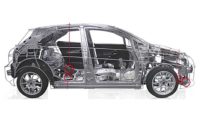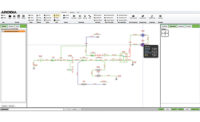By embracing technology, Pilatus Aircraft Ltd. has grown from a tiny company to a leading manufacturer of single-engine turboprop aircraft. Pilatus also has the distinction of being the only Swiss company to develop, build and sell private aircraft and training systems all over the world.
One area of technology that has been crucial to Pilatus’s success in recent years is electrical computer aided design (ECAD). The company relies on ECAD to optimize the performance of each aircraft’s electrical system.
Earlier this decade, Pilatus faced a new ECAD challenge, according to Bruno Cervia, vice president of research and development for Pilatus. It needed to better integrate ECAD data with that from other domains, such as Siemens Teamcenter product lifecycle management software.
In November 2011, the company installed the Capital software suite made by Mentor Graphics Corp. to overcome this problem. The suite includes 17 programs that let Pilatus engineers efficiently and cost-effectively define, design, build and service electrical systems and wire harnesses.
Equally important, all the programs are data-centric and share data during electrical system development. This sharing ensures that all harnesses meet the routing constraints of the Federal Aviation Regulations’ Part 25 Electrical Wiring Interconnection System mandate. Complying with this mandate is necessary for certification of a civil aircraft.
Cervia says that implementing the software presented two main challenges to Pilatus, Mentor and Siemens engineers. The first involved properly integrating the Capital and Teamcenter programs so Pilatus engineers could automate previously manual operational sequences and optimize new design capabilities.
Another challenge involved helping the engineers maintain their productivity while converting the company’s existing ECAD designs into Capital’s data-centric format. This migration allowed existing design work to be reused in new aircraft programs. It also enhanced Pilatus’s ability to produce detailed documentation and better maintain existing aircraft.
“Keeping our products ahead of the market requires the creation of intimate connections between avionics and the aircraft’s mechanical systems and airframe, both physically and in the way they are designed,” explains Cervia. “The Capital [software] allows our design teams to advance our products via integrated electrical systems architectures. This brings clear benefits, such as weight and life cycle cost savings, to [customers].”
Last year, another aerospace manufacturer, Bombardier Aerospace, used the Capital suite to define electrical systems and improve wire harness design for the Learjet 85. The software complemented a computer-aided engineering three-dimensional interactive program and one used for stress analysis and sizing optimization of metallic and composite structures.
For more information on electrical-system and wire harness design software, call 800-547-3000 or visit
www.mentor.com.




